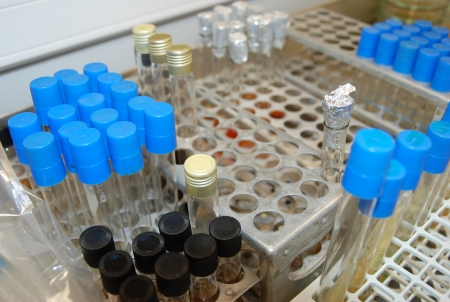Division of Molecular Biology and Microbiology

The Division of Molecular Biology and Microbiology has started as a scientific laboratory according to the LBTU Senate Decision Nr 8-170/13 .05 .2015.
Since 2016 testing has been performed in accordance with standard LVS EN ISO/IEC 17025.
The quality of test results is guaranteed by:
- LVS EN ISO/IEC 17025: 2017 standard management system;
- highly qualified personnel;
- obtaining recognized results in international interlaboratory testing with the “LGS Standards” inscription;
- use of recognized methodologies (ISO, LVS) in sample testing.
Testing accreditation certificate No.LATAK-T-168-13-99.
The Division offers:
In area of Animal and plant molecular genetics:
- DNA isolation from various biological materials:
- Storage of genetic materials;
- Molecular investigation according to the agreement;
- Determination of paternity and maternity (dogs, cats);
In the area of Bacteriology:
- Water testing (total number of micro-organisms, E. coli, coliforms and enterococci)
- Other microbiological investigation according to the agreement;
In the area of Veterinary microbiology:
- Milk (agents of the mastitis):
- Clinical material (relatively pathogenic microflora);
- Antibiogram (susceptibility to 12 types of antibiotic);
- Other microbiological tests according to the agreement;
In area of mycology:
- Hair, skin scrapers (agents of dermatomycosis);
- Pathological/clinical material (microscopic fungi)
The Division of Molecular Biology and Microbiology recommends that its customers complete the sampling protocol before sending the sample and attach it to the sampleThe national Farm Animal and Local Breed Domestic Animal Gene bank is located in Latvia University of Life Sciences and Technologies, Research Laboratory of Biotechnology, Division of Molecular Biology and Microbiology. The Gene bank stores samples of biological material (blood and DNA) of various farm animal species (cattle, horses, sheep, pigs and goats). The aim is to preserve and study local endangered breeds to conserve genetic resources. Local endangered breeds are our national treasure and the task is to promote the breeding of these animals to ensure the preservation of genetic diversity in our country.